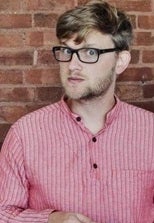The Mathematics Department proudly announces that Professor Brian Collier is the winner of the National Science Foundation CAREER Award on Higgs bundles and Anosov representations.
This project focuses on the mathematical study of curved surfaces by connecting algebraic objects to them and thereby generalizing the scope of their application. One of the main notions used is that of a surface group representation, a concept which connects surfaces to generalizations of classical geometries such as Euclidean and hyperbolic geometry. The study of surfaces has surprising applications throughout many fields of mathematics and physics. Consequently, the project lies at the intersection of multiple disciplines. In addition to cutting edge mathematical research, the project will promote the progress of science and mathematics through different workshops aimed at graduate students as well as community outreach events. The educational component will also focus on creating an engaging and inclusive place for mathematical interactions for students and early career researchers.
In the past decades, both the theories of Higgs bundles and Anosov dynamics have led to significant advancements in our understanding of the geometry of surface groups. Recent breakthroughs linking these approaches are indirect and mostly involve higher rank generalizations of hyperbolic geometry known as higher rank Teichmuller spaces. The broad aim of this project is to go beyond higher rank Teichmuller spaces by using Higgs bundles to identify subvarieties of surface group representations which generalize the Fuchsian locus in quasi-Fuchsian space. The cornerstone for the approach is the role of Slodowy slices for Higgs bundles. Specifically, the PI aims to establish Anosov properties of surface group representations associated to Slodowy slices in the Higgs bundle moduli space. This approach will significantly extend applications of Higgs bundles to both Anosov representations and (G,X) geometries. It will complete the component count for moduli of surface group representations.
